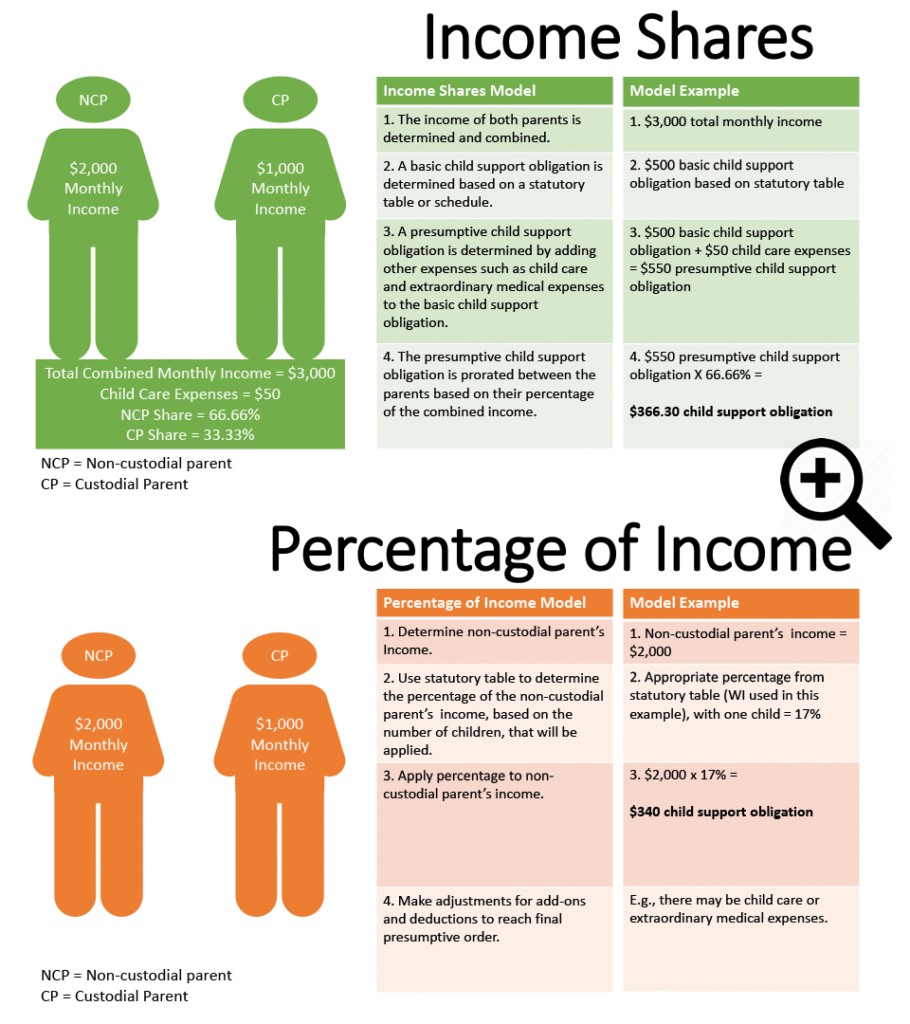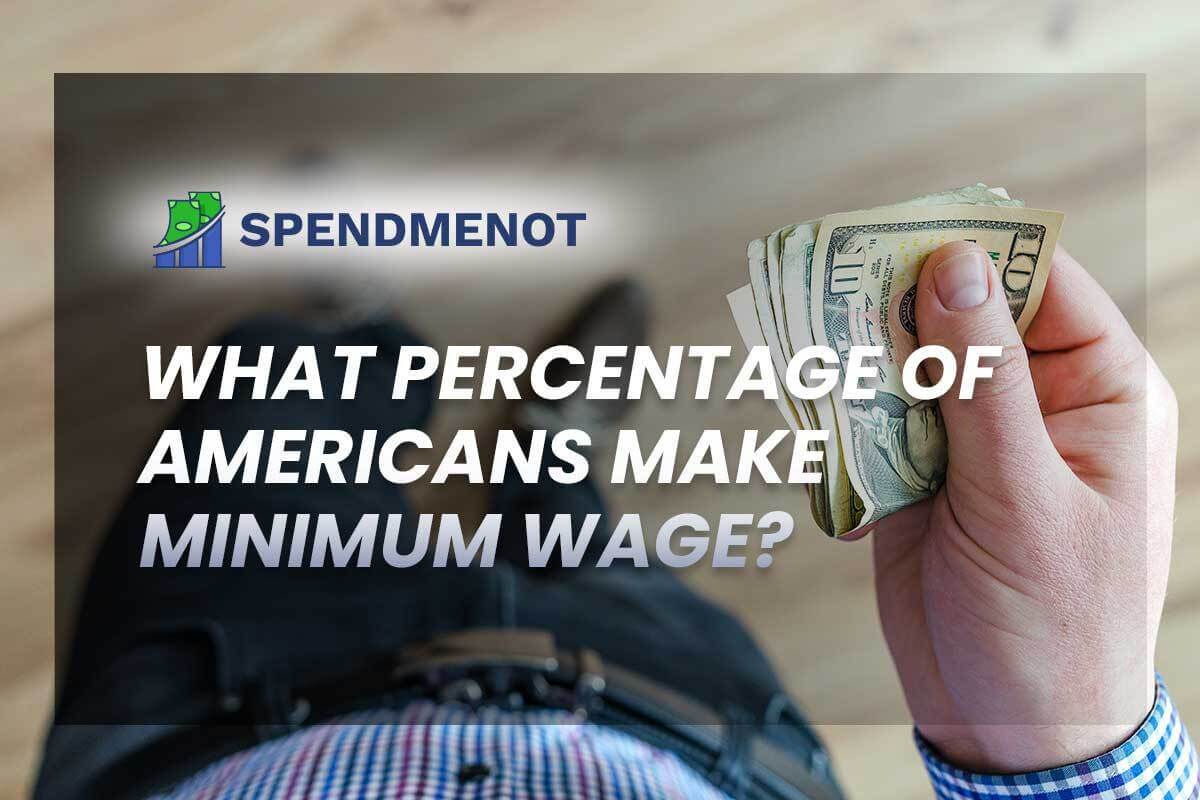Child Support Statistics
Last Updated: January 6, 2023
Children are a bundle of joy.
An innocent cry at the baby cot, and a parent comes running.
A gentle tickle elicits a giggle from the young soul, and a lift from the dad lightens their mood.
A thing of beauty.
But in relationships, there are bound to be disagreements.
Sometimes amicable, sometimes ugly, leaving the baby with two homes. Nonetheless, co-parenting shouldn’t be a competition between the two but a collaboration to achieve what’s best for the kid.
This child support statistics page looks at whether parents stay true to this mantra.
Child Support Statistics (Editor’s Choice):
- Less than half of custodial parents due for child support received full payments in 2017.
- In 2017, poverty levels were highest in custodial-mother-led families at 27.3%.
- In 2018, almost 21% of all custodial parents contacted government agencies for child-support-related assistance.
- 21.9 million children had a parent living outside their household in 2018.
- In 2013, the rate of black vs. white child support award inequality was 19%.
- Massachusetts has the most expensive child support payments, averaging $1,187 per month.
- As of November 2020, 13 states didn’t require a judge to consider a child’s custody preference.
The probability of you learning something new from the short list above is high, but that’s just the tip of the iceberg. Below we group the statistics in clusters to help you absorb the information more effectively.
Child Custody Statistics
Every child has a right to live in a safe, loving, and harmonious home.
Separated/divorced parents have a responsibility to ensure that the development of their child(ren) goes undisturbed. This means protecting them from conflict, providing and fulfilling parental obligations.
To this end, what does the data say? Let’s find out.
1. In 2017, the average monthly child support payment was $460.
(Source: Census Bureau)
Have you ever wondered what percentage of child support amounts are paid? On the same line of thought, has it ever piqued your mind about how much custodial mothers & fathers receive in child support?
Unfortunately, the latest official data available is from 2017.
In the year under review, the aggregate amount of child support that was supposed to be received by custodial parents was $30 billion.
When this figure is broken down, the average amount of child support to be received by custodial parents with legal or informal child support agreements was $5,519 per year or approximately $460 per month.
In the end, the mean annual amount received by custodial parents was $3,431 or $286 per month. However, the median annual amount of child support received by custodial parents was lower at $1,800, or just around $150 per month.
2. Just 46% of custodial parents due for child support received full payments in 2017.
(Source: Census Bureau)
In 2017, custodial mothers received $16.1 billion, or 62.8% of the $25.7 billion due.
On the other hand, custodial fathers collected $2.5 billion or 58.4% of the $4.3 billion they were supposed to receive from non-custodial mothers.
In the same year, 24% of custodial parents received some but not all of the due child support amount. The remaining 30.2% received no payments whatsoever.
3. 20.9% of all custodial parents contacted government agencies for child-support-related assistance in 2018.
(Source: Census Bureau)
Quite the statistic, right?
During the year under the review, over one-fifth of custodial parents contacted a child support enforcement office or the state department of social services for child-support-related assistance.
Welfare and Temporary Assistance for Needy Families (TANF) offices were also frequently contacted.
The most common reason for the urgent calls was to collect child support (27.3%) in light of the rising costs of raising a child. Establishing a legal agreement or court award (26%) was also cited as a major reason for getting in contact.
4. 21.9 million children had a parent living outside their household in 2018.
(Source: Census Bureau)
This figure represented more than a quarter (26.5%) of all children under 21.
Compounding this statistic is that approximately 30.1% of these children lived in poverty.
Even worse is that this poverty level was three times more than that recorded in households where both parents were present (11.1%).
5. 50% of 6.4 million non-custodial parents had visitation privileges in 2018.
(Source: Census Bureau)
It’s often pointed out that non-custodial parents have amicable visitation arrangements with their co-parents. This fact is backed up by official statistics, which point out that at least half of them had agreements to visit their children.
Although this group of parents (non-custodial) had visitation agreements, they did not have shared legal or physical custody.
Statistics also show that 30.6% of non-custodial parents had some joint-custody arrangement (physical/and or legal).
Instructively, 19.4% of non-custodial parents had no parental visitation or joint custody agreement.
6. Over 88% of child support agreements are settled in court.
(Source: Census Bureau)
Almost half (49.4%) of the 12.9 registered custodial parents in 2018 had a court order, child support award, or some other arrangement to receive child support from the non-custodial parent.
Interestingly, 88.2% of the 6.4 million custodial child support agreements were formal legal orders — established by a court or another government entity. At the same time, 11.8% of custodial parents reported informal arrangements.
7. In 2018, 7.1 million custodial parents had no legal child support agreement.
(Source: Census Bureau)
Why would a substantial number of custodial parents be comfortable with having no legal child support agreement in place?
Data shared by the Census Bureau shows that 39.1% of the 7.1 million non-custodial parents did not feel the need to have a legal agreement. Another 38.1% felt the other parent provided what they could, while 29.6% thought the other parent could not afford to pay child support.
More than a quarter of this lot (25.3%) did not want the other parent to pay.
Mother vs Father Custody Statistics
According to the American Bar Association (ABA), American family courts have been historically unfair to one party in child support cases.
Initially, fathers were favored because of their ability to support the children and because they were considered the head of the family.
Then came the maternal preference through the tender years doctrine, which presumed mothers were better equipped to care for children.
Most jurisdictions in the US have since struck down the tender years doctrine as a violation of the Equal Care Act, but inequality remains. What is the current state of affairs?
8. 80% of custodial parents in 2018 were mothers.
(Source: Census Bureau)
Care for an interesting fact?
Four in every five of the 12.9 million registered custodial parents were mothers. This means that one in every five or 20% of custodial parents were fathers.
Data also shows that in the specified year, custodial fathers tended to be older than custodial mothers.
More than half (54.6%) of custodial fathers were 40 years and above. The proportion of custodial mothers in this age bracket was 41.6%.
9. In 51% of child custody cases, both parents agree for the mother to be the custodial parent.
(Source: Census Bureau)
Are dads more amenable to the idea that it is in the best interests of their children to let the mum be the custodial parent? It seems so.
10. In 2018, 40.4% of custodial mothers were likely to have never been married before.
(Source: Census Bureau)
In the specified year, the distribution of custodial parents by marital status differed sharply between mothers and fathers.
Howso?
Custodial mothers were more likely to be divorced (30.1%) than married (16.3%), separated (11.9%), or widowed (1.3%).
On the other hand, custodial fathers were more likely than mothers to be divorced (39.1%) and less likely to have married before (29.3%).
The proportions of custodial fathers who were married (18.5%), separated (11.4%), and widowed (1.8%) did not statistically vary from the corresponding proportions for custodial mothers.
11. In 2017, 74% of custodial fathers worked full-time throughout the year.
(Source: Census Bureau)
The majority, or 51.4%, of custodial mothers also worked full-time the whole year. At the same time, a substantial 21.6% of custodial mothers were not formally employed.
And 9.2% of custodial fathers did not work at any point in the year.
12. In 2017, poverty levels were highest in custodial-mother-led families at 27.3%.
(Source: Census Bureau)
Custodial fathers have historically been better off financially than custodial mothers.
In 2017, the script was largely the same: poverty levels amongst male custodial parents stood at 11.2%.
Data shared by the Census Bureau also paints a grim picture of higher poverty levels amongst custodial mothers with more than one child.
Factor this, 18.7% of custodial mothers with one child with a parent living outside their household lived in poverty.
The poverty levels increased to 29.2% for those with two children and 50.8% for those with three or more children.
13. The gender parity in child custody cases is narrowing.
(Source: Congressional Research Service)
In 1994, approximately one in every six custodial parents were fathers representing 16% of the total. By 2018, that proportion reached one in five or 20.1%.
Projections indicated that the gap would narrow even further in the future when there will be more women who pay child support.
Child Support Statistics by Gender
There’s a tonne of evidence to prove that gender bias exists in child support. However, progress is being made in this regard. There’s cause for optimism heading into the future.
But before we get to that point, what are the statisticians reporting at the moment?
14. Custodial mothers are 1.7 times more likely to be awarded child support than their male counterparts.
(Source: Congressional Research Service)
Although both custodial mothers and custodial fathers stood at least a 73% chance of receiving typical child support payments in 2013, female custodial parents were more likely to be awarded custody dollars.
15. In 2017, custodial fathers on child support had a higher median household income by a margin of $18,000.
(Source: Census Bureau)
On the one hand, custodial fathers are less likely to be awarded custody dollars. On the other, they earn more than custodial mothers. That’s the contrast.
In 2017, the median household income for custodial fathers who were supposed to receive child support was $70,029.
This was higher than the $52,000 median household income raked in by custodial mothers due for similar payments. The amount was also more than enough to meet the average child support costs.
The median personal income for the 5.4 million custodial parents in line for child support payments in 2017 amounted to $29,030.
16. 38.4% of custodial fathers did not receive any child support payments in 2017.
(Source: Census Bureau)
Is enough being done to make sure child support for dads levels up? Data suggests not.
At 28.7%, the number of custodial mothers who did not receive child support payments was much lower than the amount custodial fathers collected.
Child Support Statistics by Race
Did you know that in the United States, a black parent is less likely to be awarded child support than their white counterpart?
Official statistics point to racial bias in child custody cases. Such informative data is summarized below.
17. Nearly half of all black children had one parent living away from their household in 2018.
(Source: Census Bureau)
During the year under review, 48.8% of black children lived with their custodial parent while the other parent lived in a separate home.
This was more than double the proportion of white children who lived in similar circumstances — 22.7%.
The numbers were even lower in the American-Indian, Alaska Native, Native Hawaiian, and Pacific Islander communities. Fourteen percent of children raised in these settings lived in custodial parent families.
At the same time, more than a quarter (28.7%) of Hispanic children lived with their custodial parent.
18. The rate of black vs white child support award inequality was 19% in 2013.
(Source: Congressional Research Service)
The list of research reports pointing out bias in child custody cases is endless. This is what child support data says.
Around 37% of black custodial parents were awarded child support in 2013. This was significantly lower than the 56% of white custodial parents who emerged from the courtroom victorious.
Even then, 65% of black custodial parents who were due child support that year received full payments compared to 79% of white custodial parents who received the whole child support amount.
19. 57% of white custodial parents had child support orders or agreements in 2017.
(Source: Census Bureau)
Was this high or low? How does this figure stack up?
The propensity for having child support orders or agreements in place was lower amongst black parents at 40.1%.
Conversely, custodial parents whose child(ren) were in contact with the other parent had higher child support order or agreement rates (53.1%) than custodial parents whose children did not have contact with the other parent (42.3%).
20. Nearly two-thirds of custodial fathers are white.
(Source: Institute for Family Studies)
In a world where fathers have historically been less likely to be the custodial parent, dads from the white community have been the biggest beneficiaries of an advancing society.
Custodial fathers were more likely to be non-hispanic white (62.9%) and less likely to be black (15.1%) or hispanic (18.4%).
21. In 2017, nearly half of all custodial mothers were white.
(Source: Census Bureau)
In the quoted year, 44% of all custodial mothers were non-hispanic white. At the same time, 28.1% of custodial mothers were black, while 24.1% were hispanic.
Child Support Statistics by State
Child support payments in America heavily depend on the state a parent lives.
Sometimes, a parent can pay three times as much as another parent who lives just six hours away despite similar circumstances.
Below, we examine and put the statistics into perspective.
22. Massachusetts has the highest child support payments, averaging $1,187 per month.
(Source: Custody Xchange)
A 2019 study by Custody Xchange shows that Nevada has the second-highest child support payments with an average of $1,146.
The state is followed by New Hampshire ($1,035), Rhode Island ($1,014.20), and Hawaii ($1,014.05).
At $400, Virginia has the lowest child support payments in the US. This is a third of what their counterpart residing in the Boston capital would pay.
West Virginia ($402.60), Oregon ($421), New Jersey ($423.58), and Indiana ($424.67) are the other states with less expensive child support payments.
23. There are three models that states use to determine the base child support amount due.
(Source: NCL)
According to the National Conference on State Legislatures (NCSL), the three models are:
- The Income Shares Model: This formula is based on the concept that a child should receive the same proportion of parental income that they would have received if the parents lived together. The majority, or 44 states, use this method.
- The Percentage of Income Model: This formula sets support as a proportion of only the non-custodial parent’s income. The custodial parent’s earnings are not factored in. Six states apply this model. Instructively, the percentage of income model has two variations. Alaska, Mississippi, Nevada, and Wisconsin use a flat percentage model. North Dakota and Texas apply a varying percentage model.
- The Melson Formula: This is a slightly complicated variant of the Income Shares Model. It incorporates several policy judgments to ensure that parents’ and children’s needs are met. Only three states – Delaware, Montana, and Hawaii – use this formula.
(Image source: NCL)
24. As of November 2020, 13 states didn’t require a judge to consider a child’s custody preference.
(Source: Custody Xchange)
Not legally bound to factor in a child’s desire, judges in the 13 states base their rulings on what they think is in the child’s best interests.
States in this category include New York, Florida, Utah, Ohio, South Dakota, Idaho, Connecticut, Wyoming, North Carolina, New Hampshire, Vermont, Arkansas, and Montana.
25. Tennessee awards 21.8% of custody time to divorced fathers. The least of all states.
(Source: Custody Xchange)
When put into perspective, a father living in Tennessee gets to see their children 80 days per year.
Florida awards divorced dads equal parenting time at 50%, or 183 days per year.
This means a dad in Florida sees their children 100 more days a year than fathers living in Tennessee.
26. In 2017, 25 states proposed bills to promote joint custody after a divorce.
(Source: Washington Post)
More specifically, the bills required judges to consider equal parenting time as a starting point in custody cases or write custody decisions down to allow parents to understand them better.
The states in question include Washington, Montana, Oregon, Arizona, Wyoming, North Dakota, South Dakota, Texas, Missouri, Iowa, Michigan, and Wisconsin.
Indiana, Mississippi, Kentucky, South Carolina, Alabama, Maryland, West Virginia, Massachusetts, Connecticut, New York, New Hampshire, Vermont, and Maine also pushed for equal custody.
In the same year, Kentucky passed a law declaring joint physical custody and equal parenting time the standard for temporary orders.
Wrap Up
What’s the take-home from this child support statistics page?
We’ve established bias against women and minority groups is a significant issue that can’t be ignored.
But some progress is being made, albeit at a slower than ideal pace. Take a second look at the stats above, and you will notice a gradual decrease in some of these biases.
Half a loaf is better than no bread. At least there is something to build on and move towards a more equitable environment.
FAQ
Yes, there is a huge number of women paying child support. Data shared by the Census Bureau shows that in 2017, women paid $2.5 billion to custodial fathers. This represented 58.4% of the $4.3 billion custodial fathers were supposed to receive from non-custodial moms.
Official statistics don’t specify the number of fathers who don’t pay child support. However, in 2017, non-custodial dads paid $16.1 billion or 62.8% of the $25.7 billion they were supposed to pay for child support.
The average child support amount supposed to be paid to custodial parents with legal or informal agreements in 2017 was $460 per month, which amounted to $5,520 per year. And the median amount of child support supposed to be received was $4,356 per year or $363 per month.
Over the years, numerous media reports and legal publications have featured concerns from parents complaining of wastage and misuse of child support by their partners. However, official child support statistics documenting such occurrences are not publically available. Parents going through a similar problem are advised to contact authorities or a child support attorney for assistance.











